XI. Höfðar, Mutualism, 2020
Magnús Jónsson — magnus18 (at) lhi.is
The context of the design course Urban Lab - Design Agency for the academic year 2019-2020 is the area of Höfðar which is located in Reykjavik.
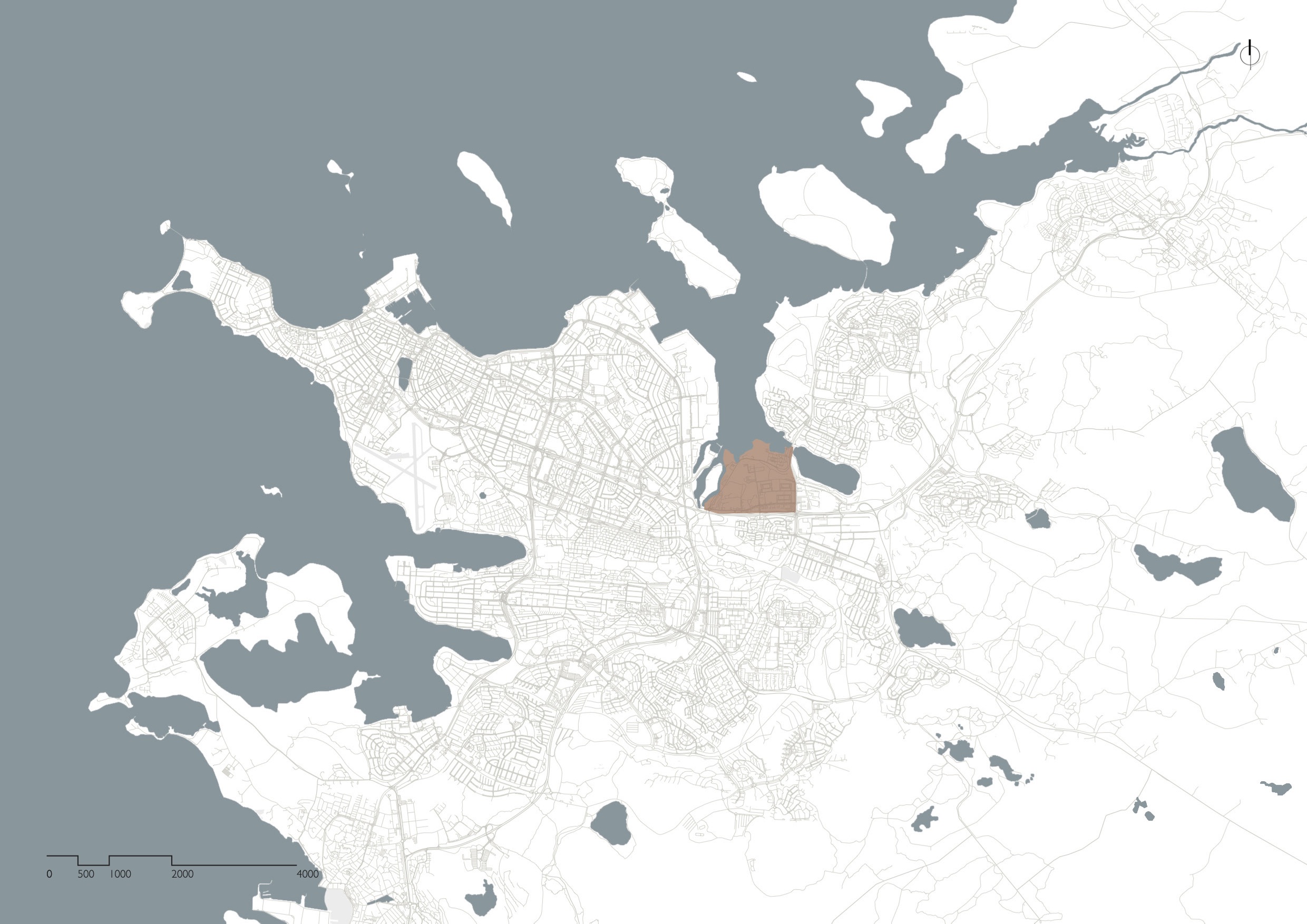
Map of Reykjavik with Höfðar in evidence
Höfðar hosts 2,751 inhabitants and more of 300 activities which altogether offer employment to thousands of people.

Map of Höfðar
54% of the surface of Höfðar is covered by water repellent materials which interfere with the natural water flow.

Water repellent surface in Höfðar
There are 8,764 parking lots in Höfðar which altogether cover a surface of 109,550 square metres.

Map of the parking places in Höfðar
By directly observing their usage it is discovered that on average only 50% of them is in use.

Map of the use of the parking places in Höfðar
These information tells us that a new plan for Höfðar must be envisioned one that is ecologically robust and socially vibrant.
In the Master Plan for 2030, Höfðar will be deeply tranformed: 6,200 new residential units will be built and ultimately support a population of over 15,000 inhabitants.

Proposed plan of Höfðar for 2030
This massive transformations give us the opportunity to designing Höfðar and reflecting upon contemporary urban living, to rethink the relationship among us and nature. A manifesto that embodies these intentions has been developed and it reads like this:
The Manifesto for Höfðar
Bigger context
When developing Höfði we should consider what purpose the area can serve in a bigger context. Reykjavík has been planned around the cars’ idea, which includes zoning and urban sprawl. This has created many problems both in urban planning as well societal. Höfði offers a good opportunity to reverse this development. The location of Höfði, close to the centre point of the urban area of Reykjavík, as well as the large unbuilt area, are important conditions for these changes.
What are the effects that Höfði should have on Reykjavík / Iceland / Earth?
A different transportation culture
Höfði will be the first area in Reykjavík to be developed with borgarlína (bus rapid transit system) in mind. It is important that we take radical steps in making borgarlína the first choice of transportation for most of the inhabitants of Höfði. We want to change the transportation culture of Reykjavík and to do that we need to create a walkable environment.
Organic evolution of a community
To create this sort of neighbourhood we need to make sure that certain essential services are present in a walking distance. The challenge is to integrate new residential dwellings within an existing environment. We want to create an opportunity for more diversity in the area, to achieve this we need to design adaptable architecture that is an architecture that is open to transformation and for a variety of services to evolve in an organic way.
Nature in everyday life
We want to make nature a part of everyday life of the people of Höfði. Nature can be translated in different forms: urban agriculture, coastal walks, riparian ecosystems. We would like nature to serve a purpose in the infrastructure of the area and in improving public spaces. The local geology, flora, fauna and ocean must all be taken into consideration.
With development there is always a certain disturbance of the ecosystem. We emphasize the importance of minimizing this disturbance. We need to be aware of the climate crisis and of its irreversible effects on cities and nature.
Green construction
We need to demand higher environmental and ethical standards not just in terms of materials and energy consumption but also in terms of processes and labour conditions. It is also important to consider the ecological and social benefit of repurposing buildings as a more ecological and social just way to imagine the future.
The effect of Höfði
It is clear to everyone that a societal change of behaviour is needed if we wish to prevent the worst-case scenario predicted by climate scientists. The effects of Höfði from an environmental perspective are limited, however we can create a model of ecological and ethical living. Iceland could lead the way into the future for radical experimentation in the way cities are planned and constructed.
Thirteen stories have been consequently developed by the second year students in architecture at the Iceland University of the Arts.
This is one of them.
Mutualism
Mutualism is a biological term describing close and long-term interaction between two or more species where both species benefit. This project is about creating a situation where the current functions can continue to exist while densifying the area and introducing new functions, primarily residential that can benefit all the residents of the neighbourhood. Thinking of ways of re-utilizing the existing as something beneficial to cut down our Co2 emissions and therefore be a valuable resource for our society and the world.
By doing this there will be a situation where living and working happens in the same lot. A concept that is in no way new and is in fact a very old one, yet it seems foreign in the suburbs of Reykjavik where the modernist principle of zooning and division of activities still rules this part of the city. My project Mutalism therefore challenges this division by creating alternative way of living based on mixed uses, sharing, and socialbility.
Mutualism is located in the industrial area of Höfðar which hosts today about 150 different small-size companies. The idea is to allow this area to gradually and organically transform in time in a mixeduse neighbourhood built in tandem with the development of a new public transportation system for the metropolitan area of Reykjavik: Borgarlína.
Mutualism offers an opportunity to rethink not only density by allowing more to happen within the same area, but also to value and sense for the existing built environment and care for the emerging social interactions.
Building on these ideas, Mutalism is a project for people who are interested in owning less and sharing more. This does not necessarily have to mean sacrificing essentials or even luxuries features but it means that by sharing aspects of our daily chores we both contribute to the solution of the climate crises and we also develop social links important for an healthy society. This could be an important option in a society where the nuclear family is not as dominant as it has been, and therefore different types of families and co-habitation can take place. The site of the project “Mutualism” is an industrial lot containing a building which hosts 3 workshops belonging to 3 different companies.
The goal of this project is to improve a certain situation by adding mass and function in a way that works with the existing and not against it. Creating a different situation where people live and work within the same lot. By doing this creating an urban landscape that feels more human, bringing the house fronts to the streets. This is a crucial step in improving the public spaces and defining them better. Coming up with a solution that if repeated in some form, could make the area fit better within the context of a neighbourhood going through radical changes.
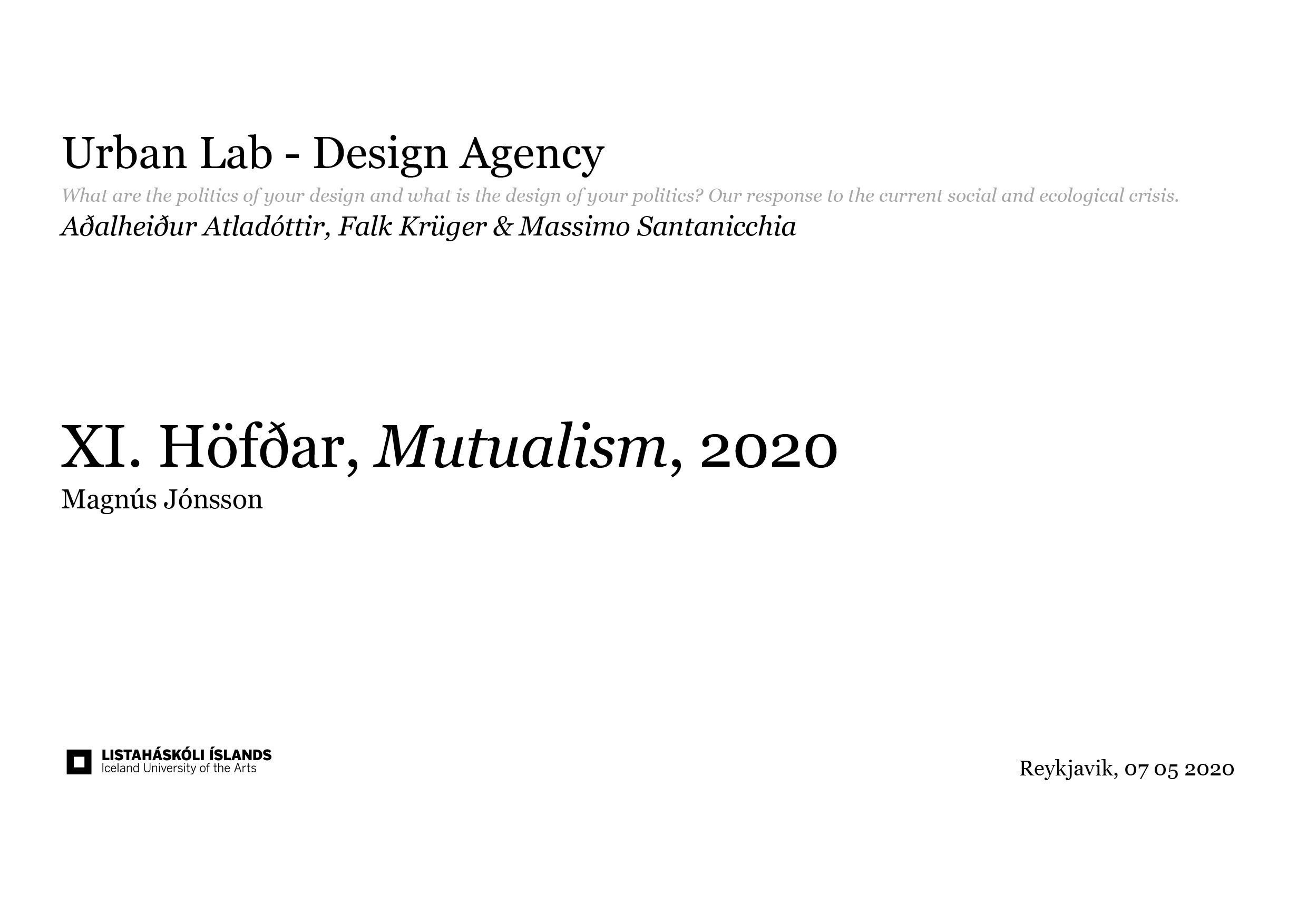



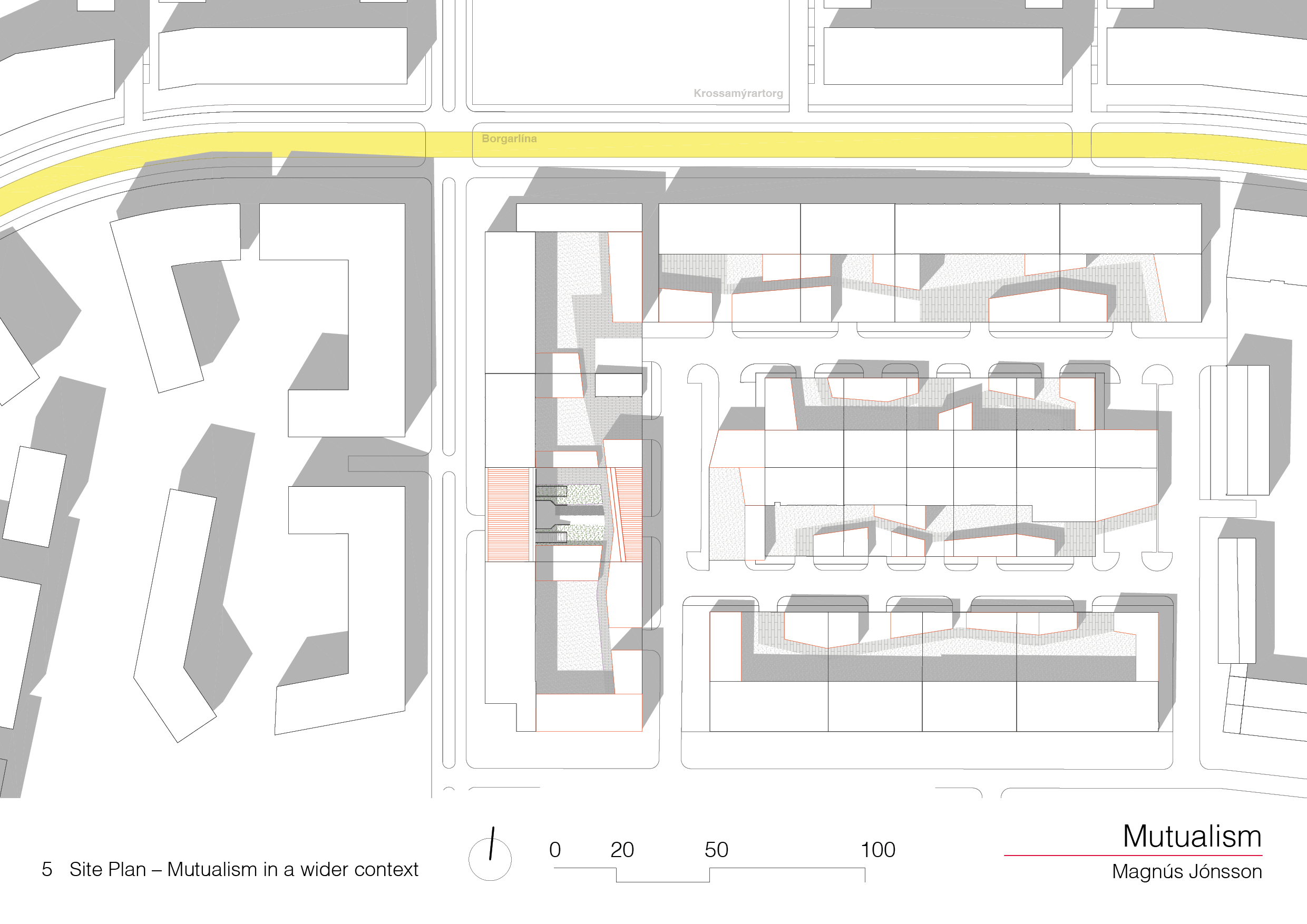




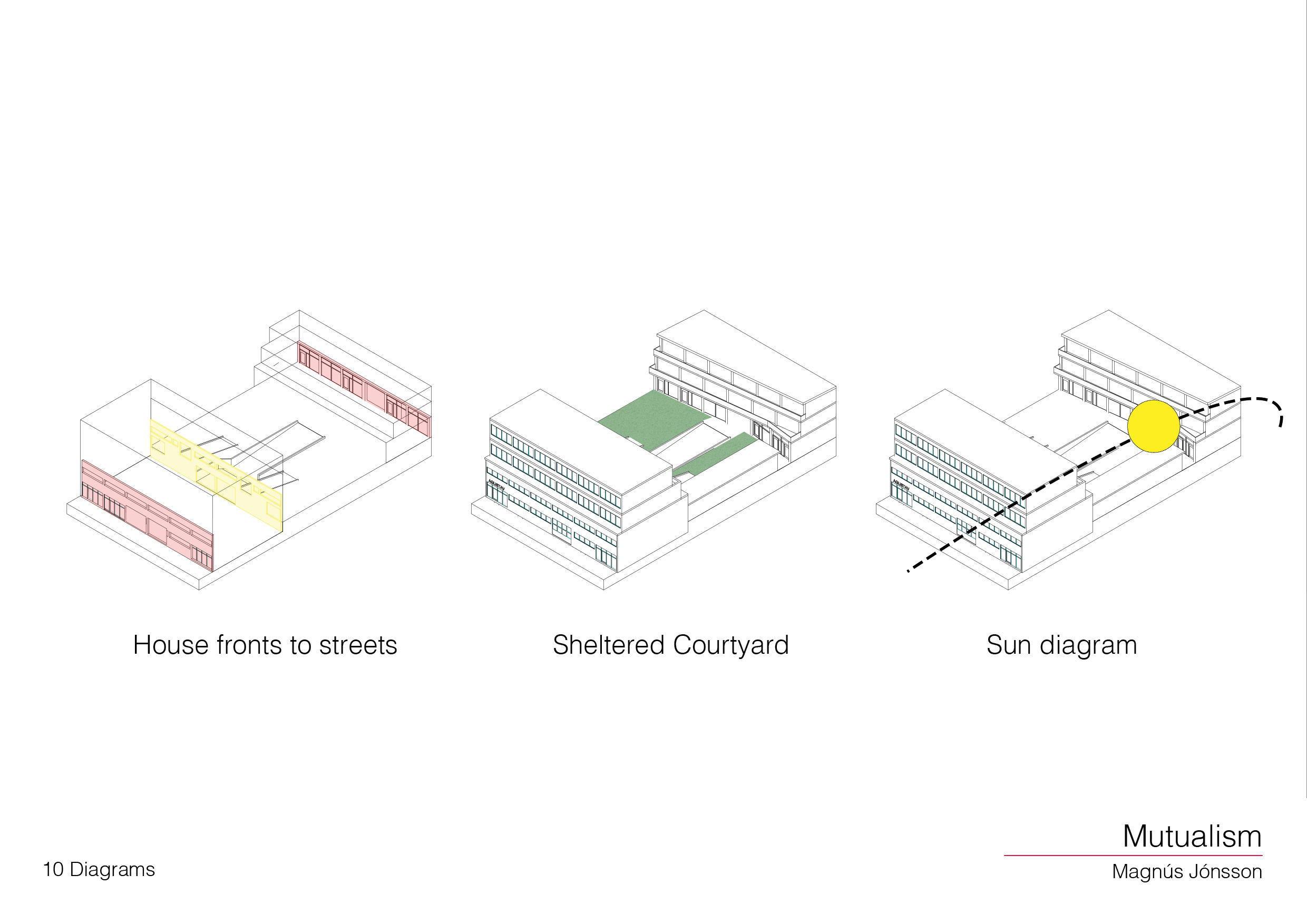

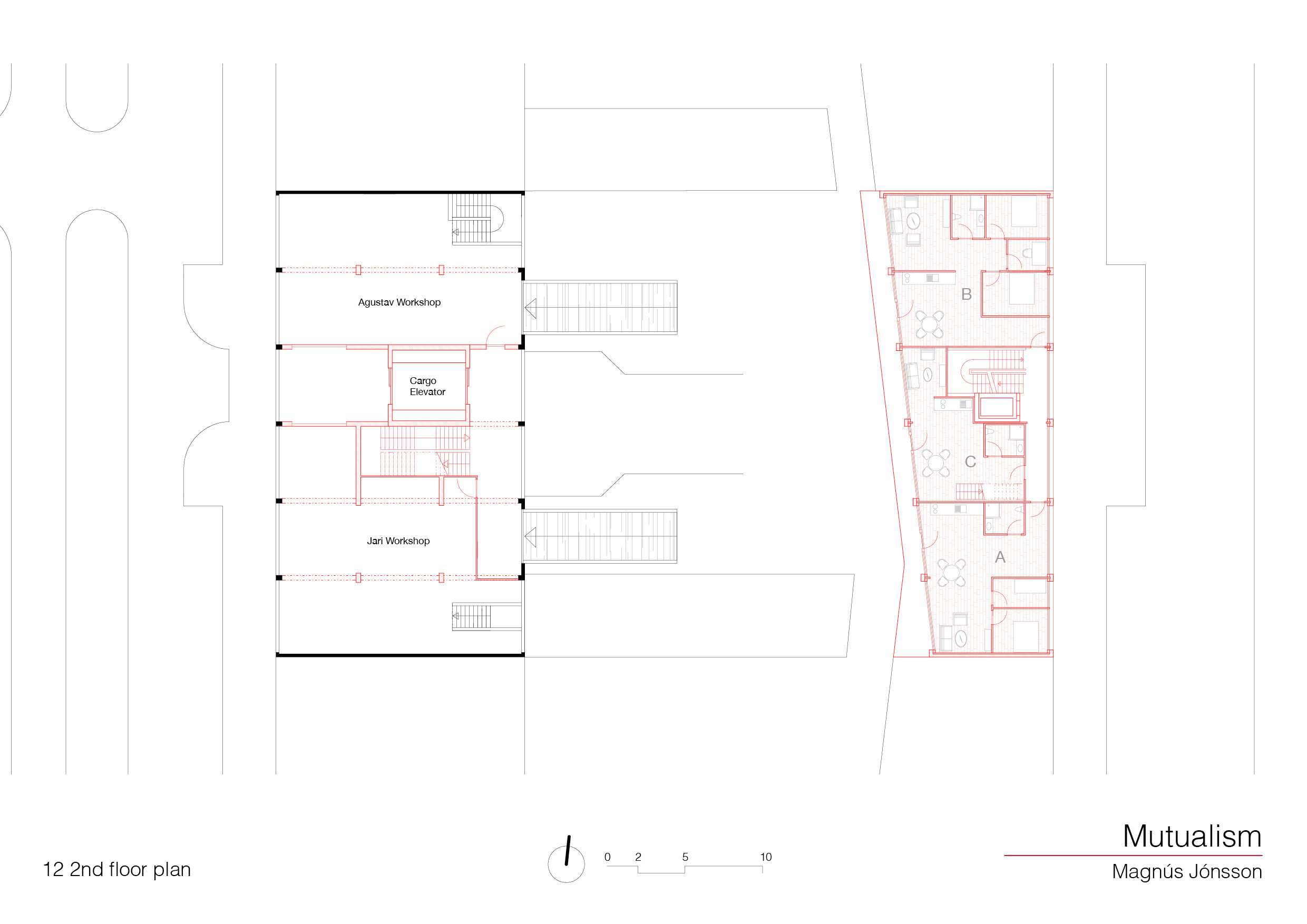
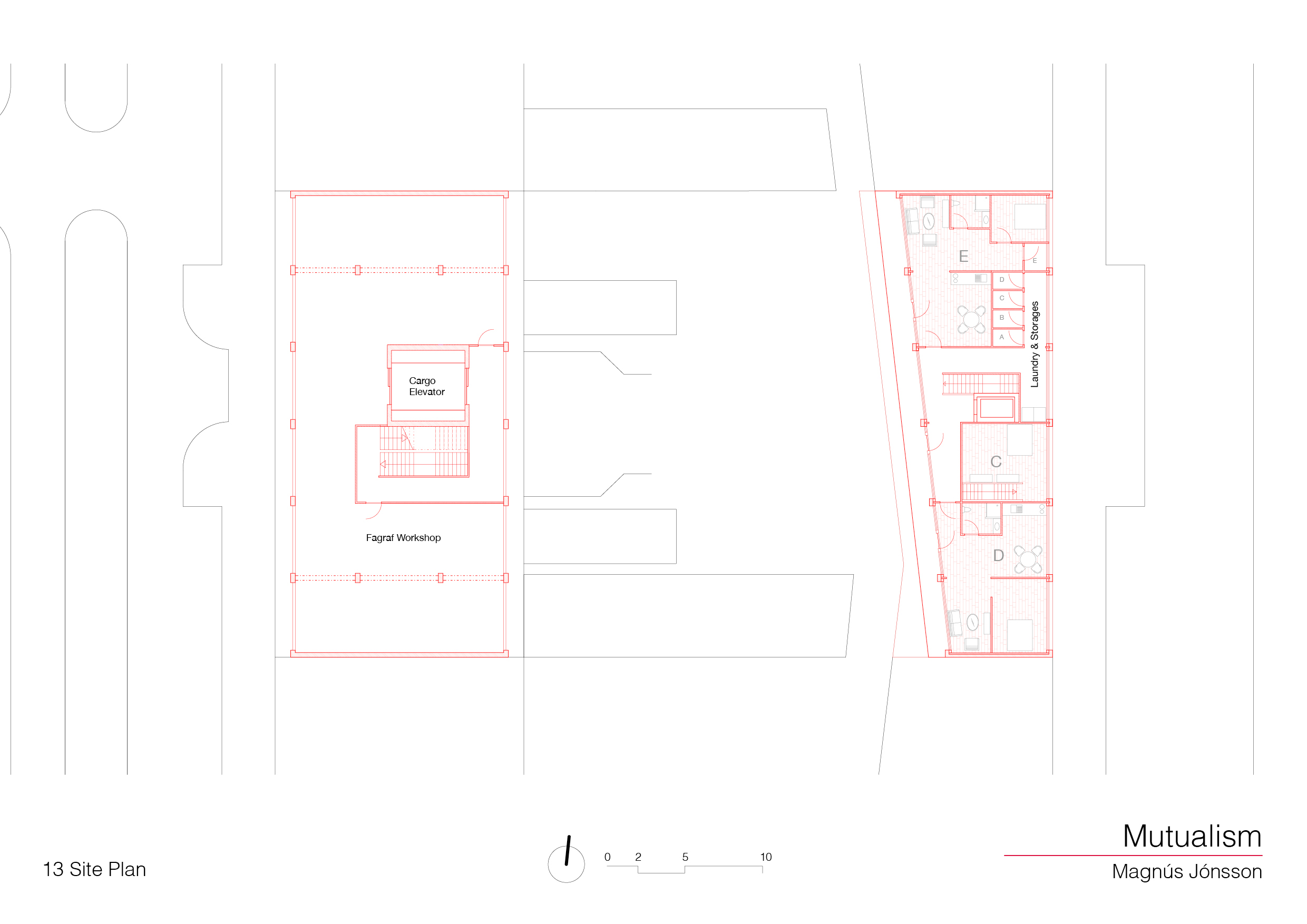




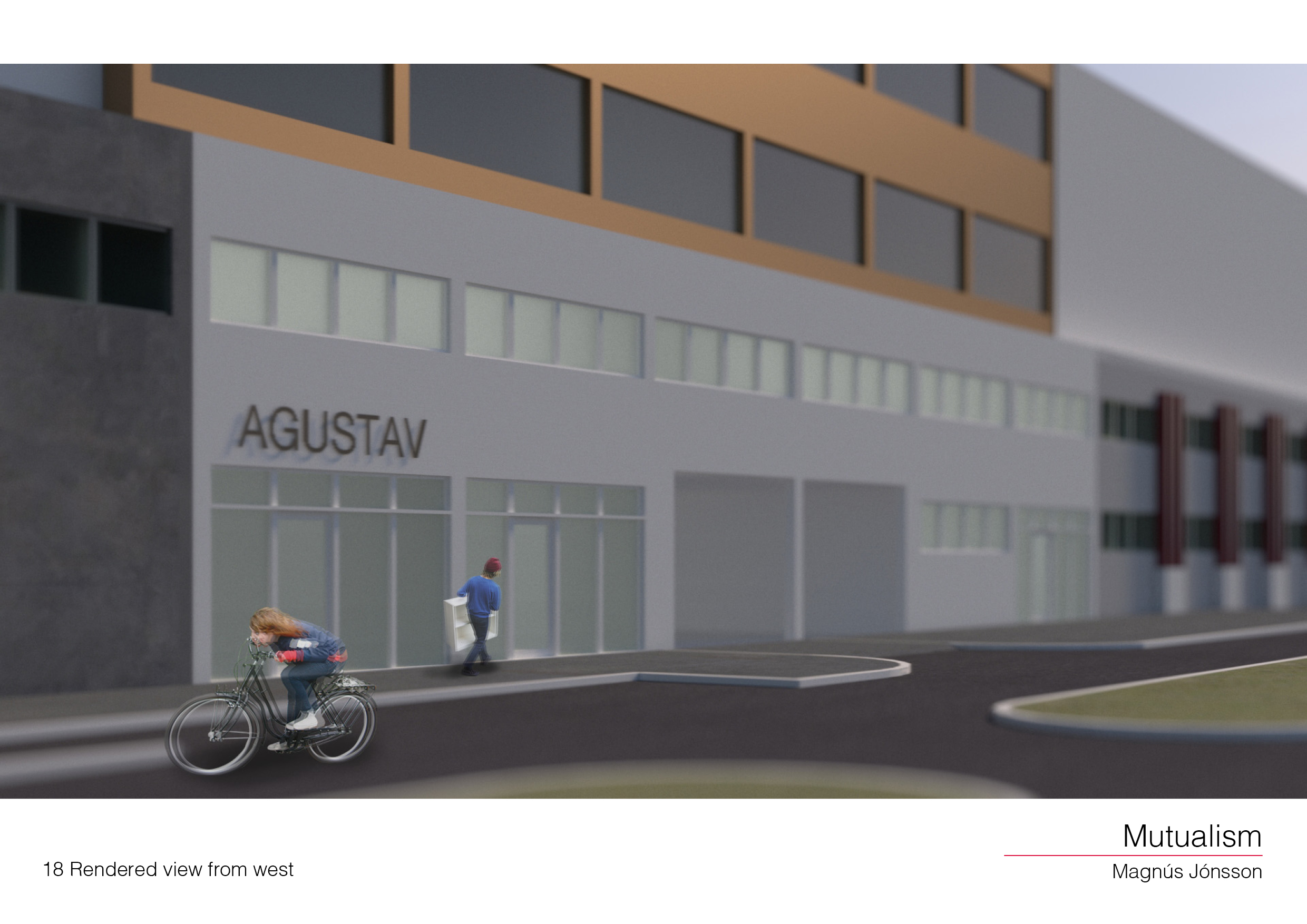


Urban Lab - Design Agency
